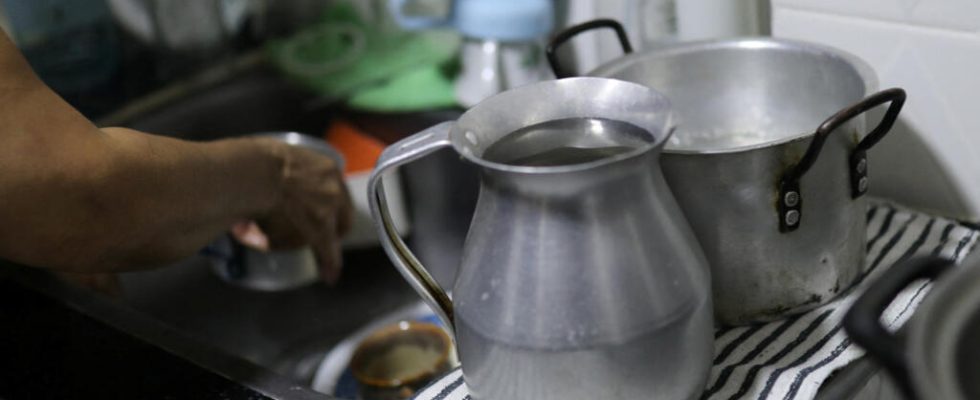The drought is pushing authorities to ration water. For three days, residents of the capital Bogota have been living without water. More than 7 million people are affected. The country is facing a severe period of drought amplified by the El Niño phenomenon. The Chingaza reservoir system, one of the main water suppliers, is at critical levels.
2 mins
With our correspondent in Medellín, Najet Benrabaa
Before the water is cut off, Luz Stella Rodriguez stocks up. It will soon be the turn of his Tunjuelito neighborhood, in the south of Bogota, to be deprived of water. “ Rationing begins at 8 a.m. So those who have to go to work have to wake up early to shower, around 6 a.m. Then the water comes back the next day at 8am. For this, during the day, we stock up on water in a tank on the roof. But in addition, we keep water bottles for drinking and cooking and also, we reuse the shower water for the toilet. »
The city of Bogota has been divided into nine zones. The rotation must be done every 24 hours. But from the second day, residents reported delays. Humberto Suarez organizes himself to work from home. “ In the Teusaquillo district, the water did not return until 10 a.m. instead of 8 a.m. And it’s serious, people then become suspicious. Because many people impatiently wait for the water to return at 8 a.m. to wash quickly and then go to work. But as a result, they arrive late for work. »
Other cities could experience the same situation as Bogota. Weeks without rain cause water reservoir levels to drop. An assessment will be made every 15 days to see if the measure needs to be renewed.
According to WWF projections, by 2050, 5.7 billion people worldwide will likely live in areas of water scarcity and the number of people exposed to flooding is expected to reach 1.6 billion.
Also listenHow to adapt to future water shortages?
